Vespers I
Vespers I / 2017 /
Christoph Bader, Dominik Kolb, Prof. Neri Oxman
.
Synopsis
Vespers is a collection of masks exploring what it means to design (with) life. From the relic of the death mask to a contemporary living device, the collection embarks on a journey that begins with an ancient typology and culminates with a novel technology for the design and digital fabrication of adaptive and responsive interfaces. We begin with a conceptual piece and end with a tangible set of tools, techniques and technologies combining programmable matter and programmable life.
The project points towards an imminent future where wearable interfaces and building skins are customized not only to fit a particular shape, but also a specific material, chemical and even genetic make-up, tailoring the wearable to both the body and the environment which it inhabits.
Imagine, for example, a wearable interface designed to guide ad-hoc antibiotic formation customized to fit the genetic makeup of its user; or, consider smart packaging or surface coatings devices that can detect contamination; finally, consider environmentally responsive architectural skins that can respond to, and adapt—in real time—to environmental cues. Research at the core of this project offers a new design space for biological augmentation across a wide breadth of application domains, leveraging resolution and scale.
The collection includes three series. The first series features the death mask as a cultural artefact. The final series features a living mask as an enabling technology. The second series mediates between the two, marking the process of ‘metamorphosis’ between the ancient relic and its contemporaneous interpretation.
The living masks in the final series embody habitats that guide, inform and ‘template’ gene expression of living microorganisms. Such microorganisms have been synthetically engineered to produce pigments and/or otherwise useful chemical substances for human augmentation such as vitamins, antibodies or antimicrobial drugs.
Combined, the three series of the Vespers collection represent the transition from death to life, or from life to death, depending on one’s reading of the collection.
General Description
The most iconic death masks—like those of Agamemnon and King Tutankhamun—were made entirely of, or inlaid with, precious stones and minerals. The use of color often expressed the cultural attributes of the deceased associated with their spiritual powers, or religious affiliation.
The first series explores life through the lens of death. Inspired by ancient masks, it uses five color combinations commonly found in religious practices across regions and eras, and is embedded with natural minerals, such as bismuth, silver, and gold.
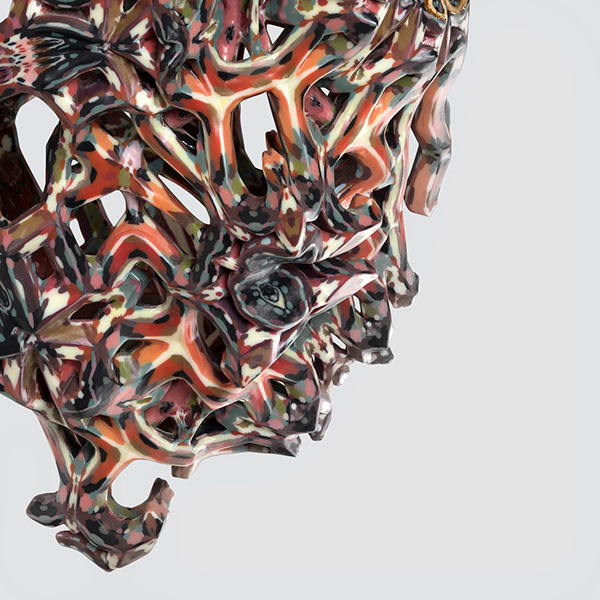
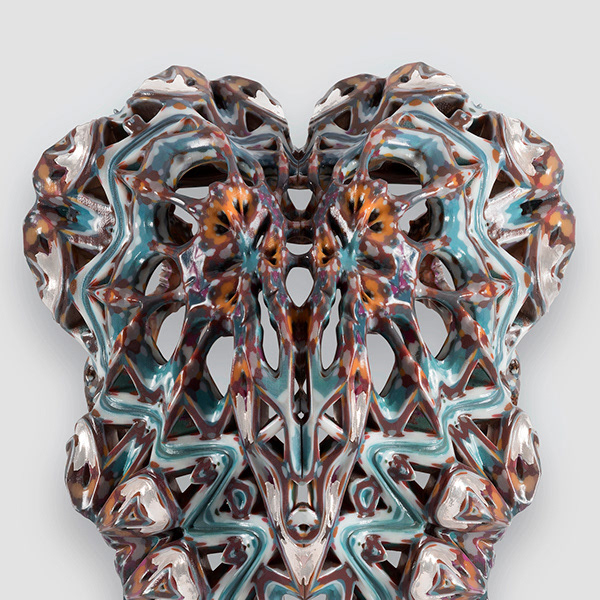

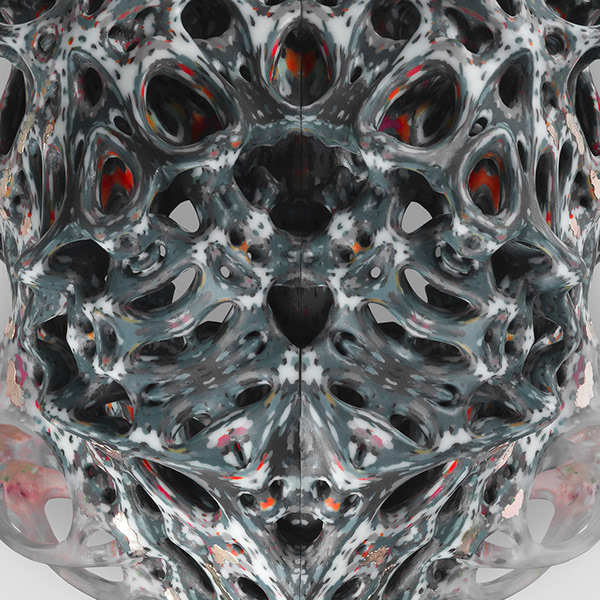
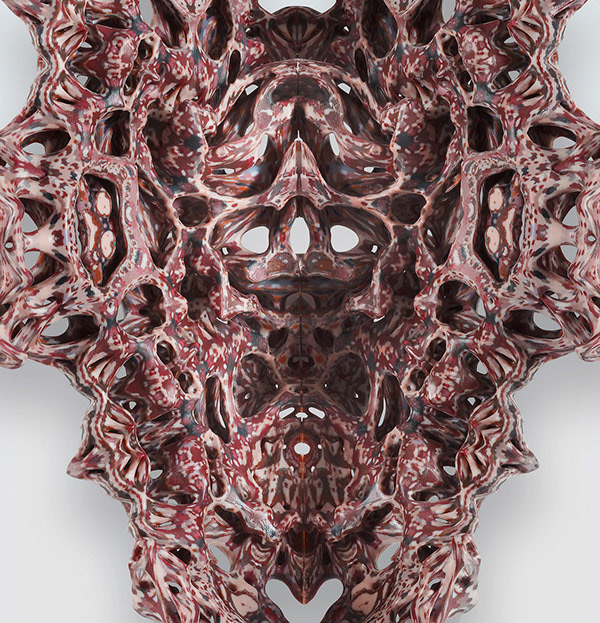
The masks’ colors are correlated with underlying geometries, which are, in combination, driven by a parametric grammar. In this series, polyhedral meshes are ‘evolved’ into subdivided surfaces using an algorithm, which—like the formation of life itself—emulates cellular subdivision. Using a minimal set of rules, the series generates a plethora of color/shape schemes. The implementation of the Stratasys full color multi-material 3D printing technology enables the creation of objects—for the first time in the history of additive manufacturing—that match the variety and nuance of ancient crafts.
Technical Description
The design and digital fabrication of masks belonging to the first series utilizes a generative method for the creation of geometrically complex and materially heterogeneous objects. By combining generative design and additive manufacturing, we demonstrate a unique form-finding approach and method for multi-material 3D printing.
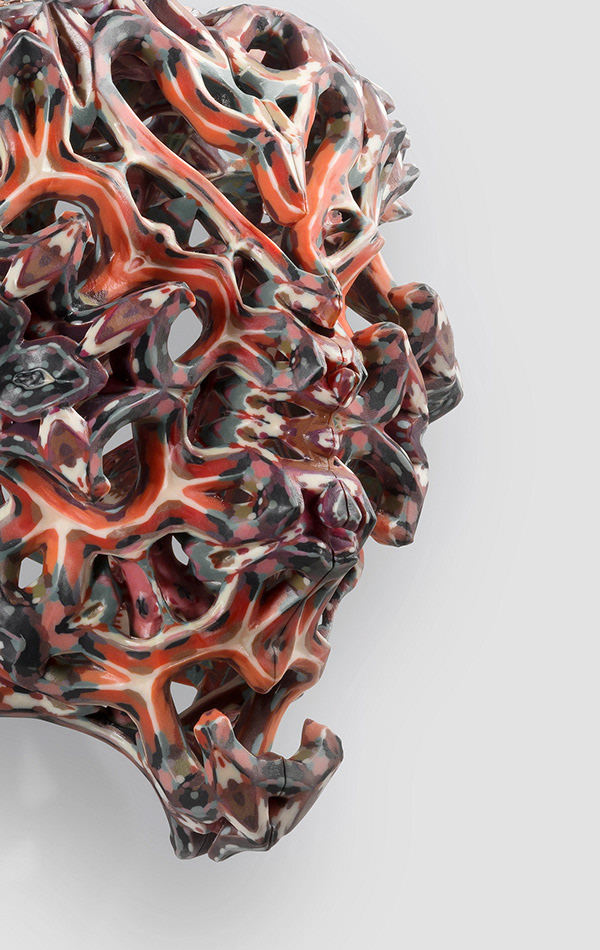


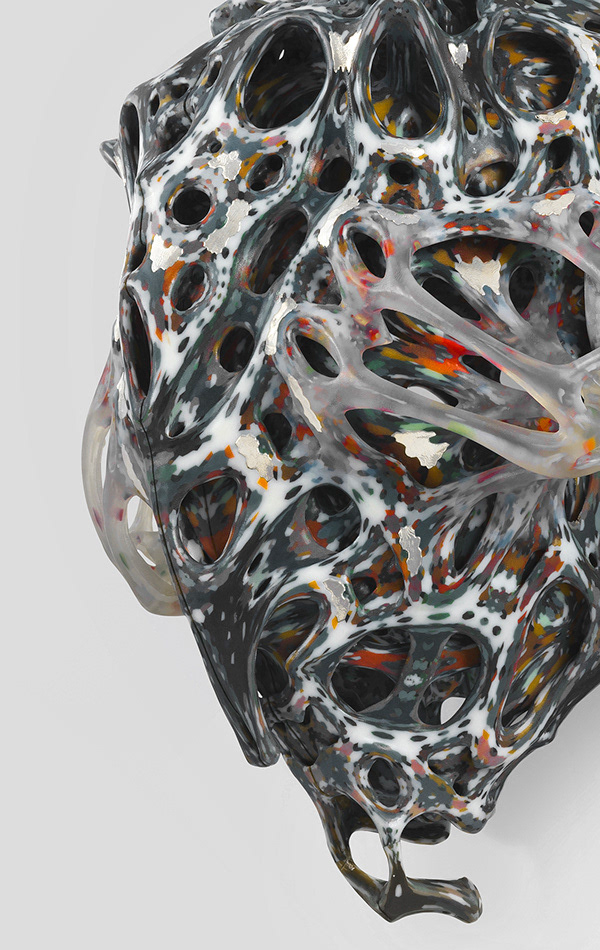
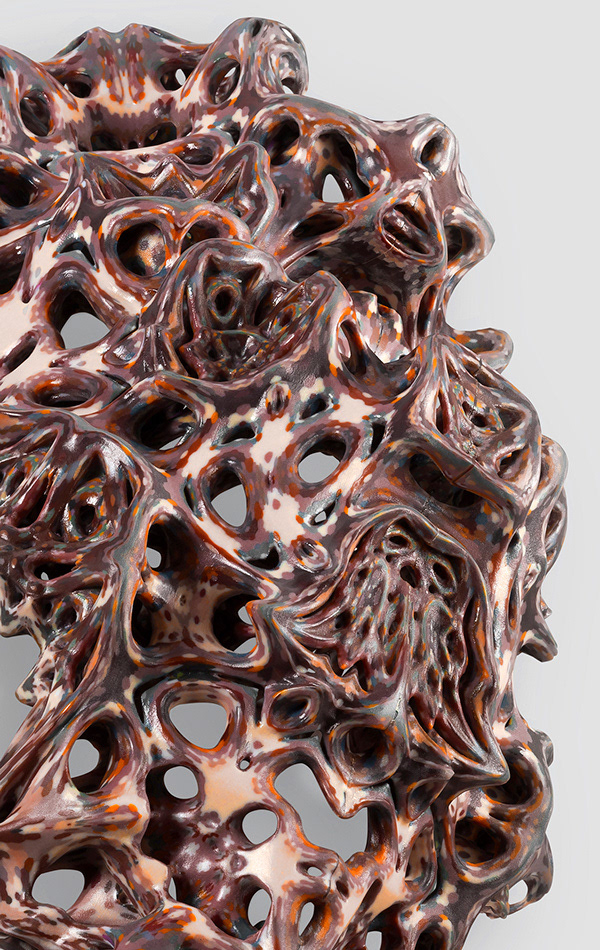
The series utilizes our bitmap-slicing framework to inform material property distribution in concert with slice generation, in real time. In contrast to existing approaches occupying the intersection of computational design and additive manufacturing, this framework emphasizes the ability to integrate multiple geometry-based data sources to achieve high levels of control for applications in a wide variety of design scenarios.
Acknowledgements
Jeremy Flower, Kelly Egorova, Ahmed Hosny, Wendy Salmon, Tzu Chieh Tang, Noah Jakimo
Naomi Kaempfer, Boris Belocon, Gal Begun
MIT Environmental Health and Safety, Media Lab Facilities, The Center for Bits and Atoms
The Vespers series was created in collaboration with Stratasys for the New Ancient collection.
Naomi Kaempfer, Boris Belocon, Gal Begun
MIT Environmental Health and Safety, Media Lab Facilities, The Center for Bits and Atoms
The Vespers series was created in collaboration with Stratasys for the New Ancient collection.
.